
# 1509 PB - 1973 10c 50-Star and 13-Star American Flags
10¢ 50-Star and 13-Star Flags
Quantity: Unknown
The Battle of Cowpens
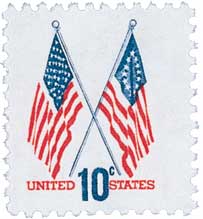
On January 17, 1781, the Continental Army fought the British near Cowpens, South Carolina. They used the only double envelopment of the war to claim an important victory in what’s considered the turning point in the battle for South Carolina.
The Continental Army suffered a string of defeats in South Carolina in 1780, leaving the British in control of most of the colony. Nathanael Greene was made commander of the Southern Department in October. Brigadier General Daniel Morgan reported for duty that December. Morgan had participated in the siege of Boston, the Battle of Quebec, and his riflemen (known as Morgan’s Riflemen) had helped the Continental Army win its victory at Saratoga.
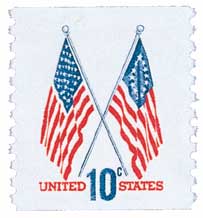
Greene’s Southern Department numbered about 2,300 men, and only 949 of them were Continental regulars. Greene didn’t think his force could face the British head-on, so he decided to split the army. He placed Morgan in command of a detachment that would travel west of the Catawba River to find supplies and raise morale among the locals. Morgan set out west on December 21 with 600 men.
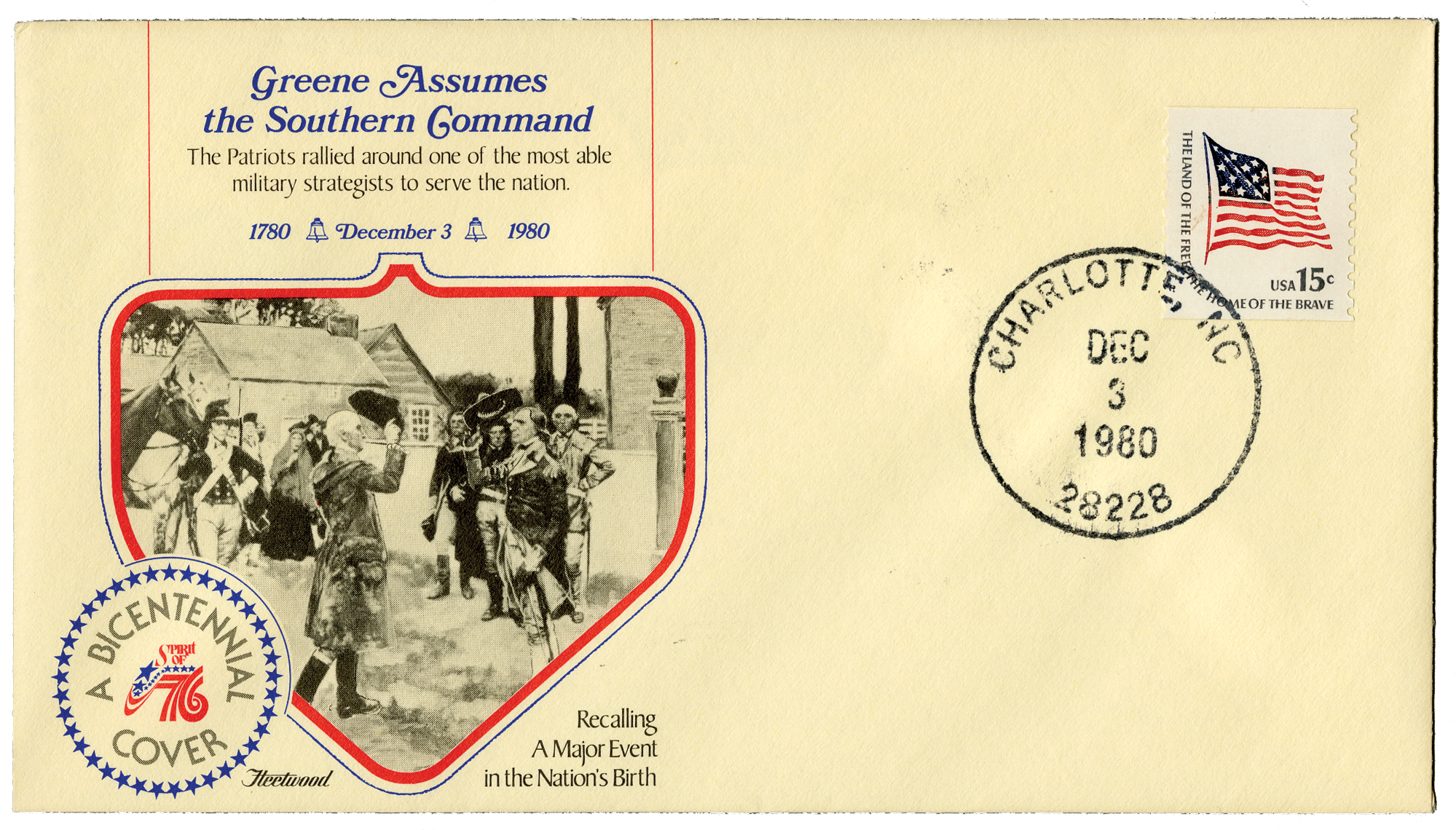
The British believed Morgan was planning to attack their fort of American Loyalists. So, Lord Cornwallis sent Lieutenant Colonel Banastre Tarleton to protect it. When Tarleton reached the fort and discovered Morgan wasn’t there, he requested more troops and set out to push Morgan across the Broad River. When he discovered Tarleton was heading his way, Morgan retreated north. By January 16, Morgan’s force was near the Broad River. The river was high and would be challenging to cross. Morgan decided to stay and fight, rather than risk an attack by the British while they attempted to cross the river. When Tarleton realized Morgan wasn’t going to the cross the river, he pushed his troops to march through the night, rather than set up camp.
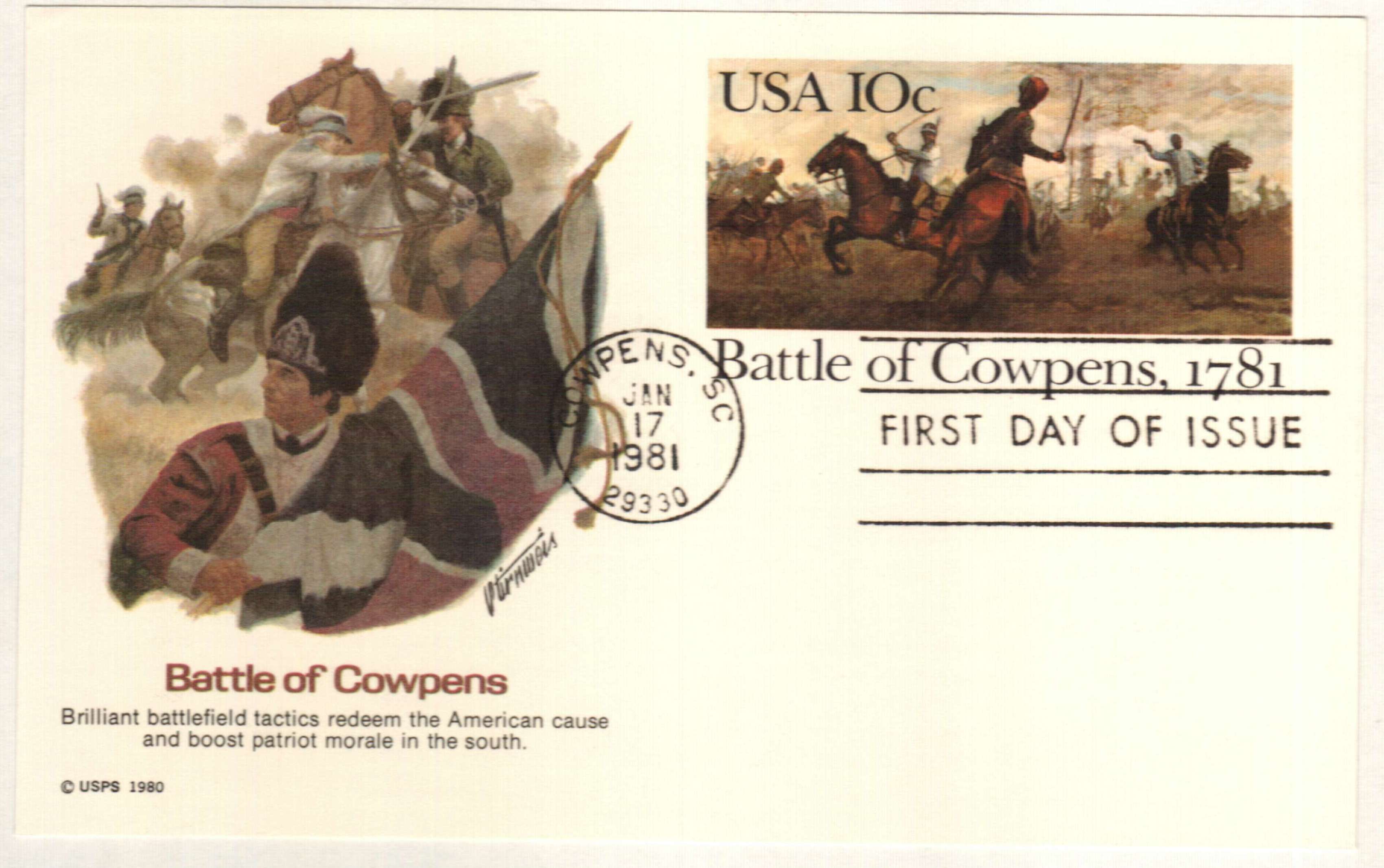
Morgan developed an unconventional, but effective plan for the battle. A large part of his force consisted of untrained militiamen who had a history of retreating when the battle turned against them. He positioned his forces between the Broad and Pacolet rivers, so they couldn’t try to run if they were routed. And while his flanks were exposed, they were surrounded by rivers, which he believed would protect them from a British attack. Morgan also expected that Tarleton would attack head-on. So he established three lines of fighters – sharpshooters, inexperienced militia, and regulars mixed with experienced militia. He placed his weakest militiamen up front and ordered them to fire two volleys and then withdraw to the rear. This would look like they were retreating, drawing Tarleton’s forces in, where Morgan’s sharpshooters and more experienced troops could fight the British head on. These troops would also feign retreat, to further confuse the British.

Meanwhile, the British force was exhausted. They had run out of food and had less than four hours of sleep in the previous 48 hours. They had also done a lot of rapid marching over tough terrain. Despite warnings that his men needed to rest, Tarleton felt certain he would be victorious.
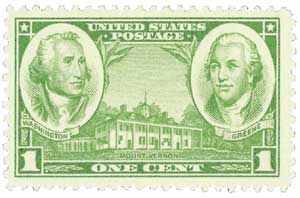
Tarleton’s first line of dragoons approached the American position shortly before sunrise on January 17. Morgan’s men fired back, hitting 15 dragoons. The dragoons then retreated, and Tarleton called up his infantry. Morgan’s men faked retreat as planned, which led Tarleton to believe he’d won, so he sent his troops right toward Morgan’s third line of fully disciplined regulars. As the British drove in, militia men appeared to flee and the British broke formation to follow. However, the militia turned around and fired back on them. Tarleton’s force quickly collapsed, with many men surrendering and others dropping to the ground out of pure exhaustion. Tarleton attempted to get his one remaining unit to charge, but they refused and fled. He then forced a local planter to help him flee.
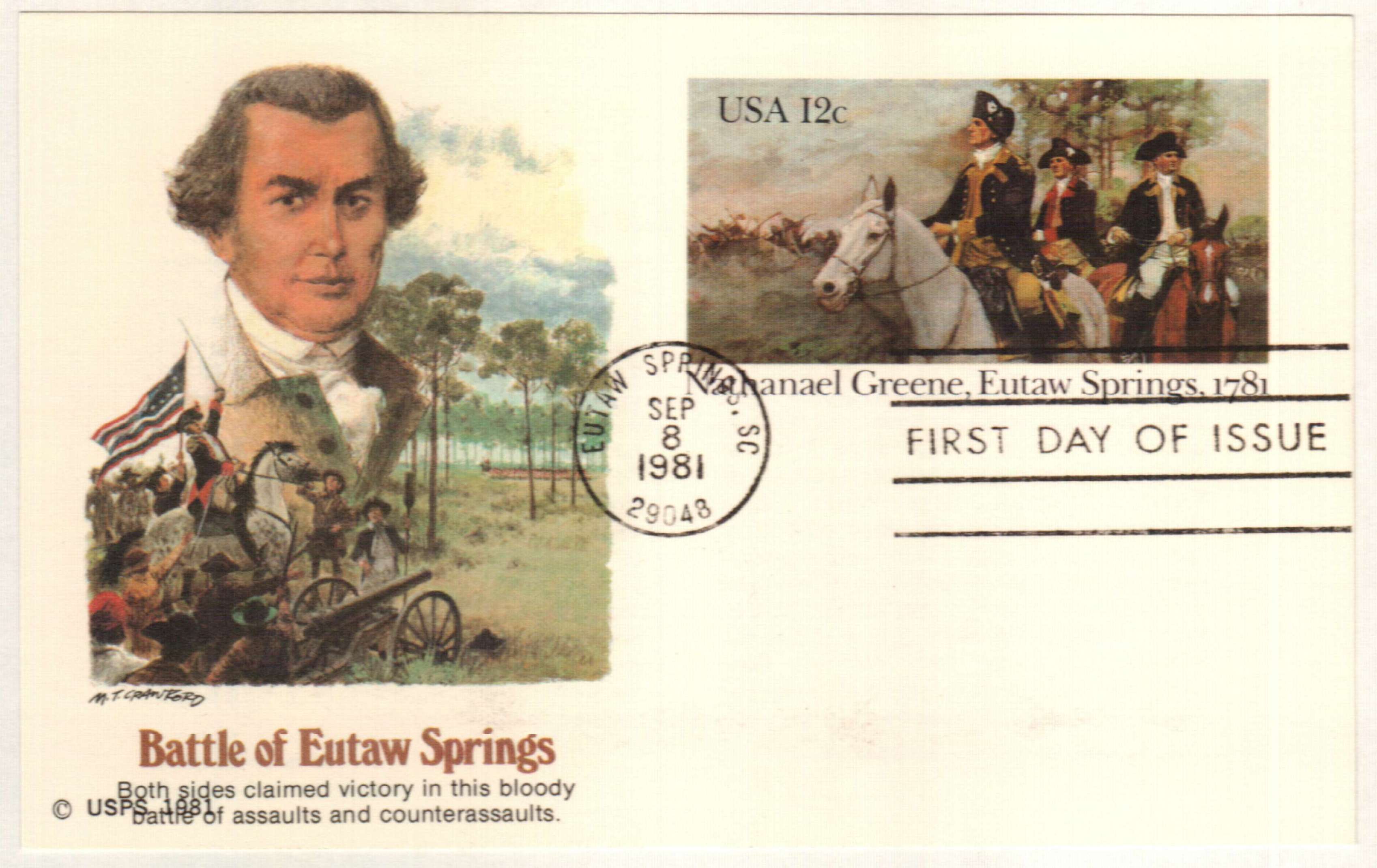
The battle lasted just one hour, but Morgan’s men captured 712 prisoners, many of whom were some of Cornwallis’s finest fighters. Tarleton suffered 110 killed and 229 wounded. The American force had 25 killed and 124 wounded. Morgan was applauded for his planning. One historian wrote that Morgan may have been “the only general in the American Revolution, on either side, to produce a significant original tactical thought.” The victory at Cowpens was a turning point in the war, helping to drastically raise American morale and demoralize the British. It also set the stage for the Battles of Guilford Court House and Yorktown, which brought about the end of the war.
10¢ 50-Star and 13-Star Flags
Quantity: Unknown
The Battle of Cowpens

On January 17, 1781, the Continental Army fought the British near Cowpens, South Carolina. They used the only double envelopment of the war to claim an important victory in what’s considered the turning point in the battle for South Carolina.
The Continental Army suffered a string of defeats in South Carolina in 1780, leaving the British in control of most of the colony. Nathanael Greene was made commander of the Southern Department in October. Brigadier General Daniel Morgan reported for duty that December. Morgan had participated in the siege of Boston, the Battle of Quebec, and his riflemen (known as Morgan’s Riflemen) had helped the Continental Army win its victory at Saratoga.

Greene’s Southern Department numbered about 2,300 men, and only 949 of them were Continental regulars. Greene didn’t think his force could face the British head-on, so he decided to split the army. He placed Morgan in command of a detachment that would travel west of the Catawba River to find supplies and raise morale among the locals. Morgan set out west on December 21 with 600 men.

The British believed Morgan was planning to attack their fort of American Loyalists. So, Lord Cornwallis sent Lieutenant Colonel Banastre Tarleton to protect it. When Tarleton reached the fort and discovered Morgan wasn’t there, he requested more troops and set out to push Morgan across the Broad River. When he discovered Tarleton was heading his way, Morgan retreated north. By January 16, Morgan’s force was near the Broad River. The river was high and would be challenging to cross. Morgan decided to stay and fight, rather than risk an attack by the British while they attempted to cross the river. When Tarleton realized Morgan wasn’t going to the cross the river, he pushed his troops to march through the night, rather than set up camp.

Morgan developed an unconventional, but effective plan for the battle. A large part of his force consisted of untrained militiamen who had a history of retreating when the battle turned against them. He positioned his forces between the Broad and Pacolet rivers, so they couldn’t try to run if they were routed. And while his flanks were exposed, they were surrounded by rivers, which he believed would protect them from a British attack. Morgan also expected that Tarleton would attack head-on. So he established three lines of fighters – sharpshooters, inexperienced militia, and regulars mixed with experienced militia. He placed his weakest militiamen up front and ordered them to fire two volleys and then withdraw to the rear. This would look like they were retreating, drawing Tarleton’s forces in, where Morgan’s sharpshooters and more experienced troops could fight the British head on. These troops would also feign retreat, to further confuse the British.

Meanwhile, the British force was exhausted. They had run out of food and had less than four hours of sleep in the previous 48 hours. They had also done a lot of rapid marching over tough terrain. Despite warnings that his men needed to rest, Tarleton felt certain he would be victorious.

Tarleton’s first line of dragoons approached the American position shortly before sunrise on January 17. Morgan’s men fired back, hitting 15 dragoons. The dragoons then retreated, and Tarleton called up his infantry. Morgan’s men faked retreat as planned, which led Tarleton to believe he’d won, so he sent his troops right toward Morgan’s third line of fully disciplined regulars. As the British drove in, militia men appeared to flee and the British broke formation to follow. However, the militia turned around and fired back on them. Tarleton’s force quickly collapsed, with many men surrendering and others dropping to the ground out of pure exhaustion. Tarleton attempted to get his one remaining unit to charge, but they refused and fled. He then forced a local planter to help him flee.

The battle lasted just one hour, but Morgan’s men captured 712 prisoners, many of whom were some of Cornwallis’s finest fighters. Tarleton suffered 110 killed and 229 wounded. The American force had 25 killed and 124 wounded. Morgan was applauded for his planning. One historian wrote that Morgan may have been “the only general in the American Revolution, on either side, to produce a significant original tactical thought.” The victory at Cowpens was a turning point in the war, helping to drastically raise American morale and demoralize the British. It also set the stage for the Battles of Guilford Court House and Yorktown, which brought about the end of the war.








